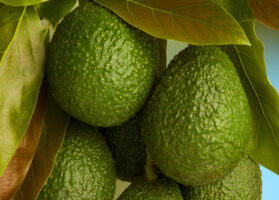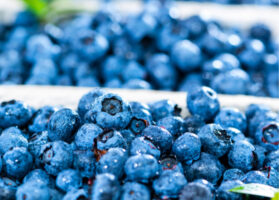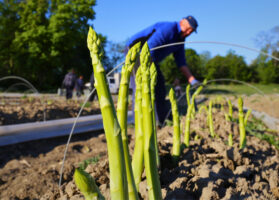Agronometrics in Charts: California Growers Anticipate the Introduction of New Table Grape Varieties
In this installment of the ‘Agronometrics In Charts’ series, Sarah Ilyas studies the state of the California grape season. Each week the series looks at a different horticultural commodity, focusing on a specific origin or topic visualizing the market factors that are driving change.
In 1839, California witnessed a significant fresh grape boom when William Wolfskill, a former Kentucky trapper, established the state’s inaugural table grape vineyard in the Mexican colonial pueblo, now known as Los Angeles. As an agricultural entrepreneur, Wolfskill pioneered the shipment of fresh grapes to Northern California. In 1869, R.B. Blowers expanded upon this concept by successfully delivering the first 22-pound box of California grapes to Chicago via the newly constructed transcontinental railroad.
Presently, California is the predominant source of commercially grown grapes in the United States. According to Kathleen Nave, the president and CEO of the California Table Grape Commission, “Grapes from California are important to the rest of the country as well because 99 percent of all commercially grown table grapes in the U.S. come from the Golden State.” This preference is justified by the Coachella and San Joaquin valleys’ consistent sunshine, fertile soil, and access to fresh mountain water, making them ideal regions for table grape production. “In spite of labor and shipping challenges, and inflation and the value of the dollar, California table grapes still found success in export markets last season,” Nave said. “In 2023, the commission is determined to capitalize on that success and plans to expand market share of California table grapes in the target export markets.” Early expectations are that the 2023 crop will be comparable to or slightly larger than last season’s 95.1 million 19-pound boxes.

Source: USDA Market News via Agronometrics.
(Agronometrics users can view this chart with live updates here)

Source: USDA Market News via Agronometrics.
(Agronometrics users can view this chart with live updates here)
Growers in 2023 anticipate the introduction of new proprietary varieties, which promise higher yields and fruit with enhanced taste. In line with the global trend, California experienced a notable varietal renewal in 2022, with growers removing underperforming black grape varieties due to reduced yield and weak market demand. Red and green varieties with exceptional flavors continue to thrive. However, changing varieties remains an investment and time-intensive endeavor, as each table grape variety performs uniquely across different countries and regions within the Central Valley. When selecting new varieties, growers must conduct trials to ensure suitability for their specific environmental conditions according to Mike Rubidoux, Director of Sales Strategy at Hazel Technology. International Fruit Genetics LLC (IFG), the leading global table grape breeder with over 48 patented table grape varieties, has announced the upcoming inauguration of a cutting-edge breeding and research laboratory. This state-of-the-art facility will be an integral part of IFG’s groundbreaking $19 million Fruitworks| IFG Discovery Center, situated in McFarland, California. While the official opening of the Fruitworks campus is scheduled for spring 2024, the laboratory is expected to become operational in early summer 2023, providing IFG’s Research & Development team with a workspace that is more than ten times larger than its current facility.

Source: USDA Market News via Agronometrics.
(Agronometrics users can view this chart with live updates here)
The past decade in California has experienced severe drought conditions, compelling Central Valley growers to heavily rely on groundwater. High aquifer utilization resulted in increased salt levels and hindered grape absorption of soil nutrients, leading to less resilient and lower-quality fruit. However, in the first quarter of 2023, atmospheric rivers brought unprecedented precipitation to California and its Central Valley. Growers cautiously embrace the potential of this rainfall to replenish aquifers, reduce salt levels, and enhance table grapes’ nutrition, resilience, yield, and quality for the coming years.
2023 marks a season of exploration for the U.S. table grape market. Introduction of new varieties holds promise for increased volumes and more flavorful fruit. As historic precipitation continues, growers must consider potential flooding and assess the true impact of record rainfall during the summer months. Collaborating with policymakers for increased financial support on labor expenses may be crucial for California’s future grape-growing success.
In our ‘In Charts’ series, we work to tell some of the stories that are moving the industry. Feel free to take a look at the other articles by clicking here.
All pricing for domestic US produce represents the spot market at Shipping Point (i.e. packing house/climate controlled warehouse, etc.). For imported fruit, the pricing data represents the spot market at Port of Entry.
You can keep track of the markets daily through Agronometrics, a data visualization tool built to help the industry make sense of the huge amounts of data that professionals need to access to make informed decisions. If you found the information and the charts from this article useful, feel free to visit us at www.agronometrics.com where you can easily access these same graphs, or explore the other 21 commodities we currently track.
Written by: Sarah Ilyas






